Pathways in Japan: An Insider’s Guide to Hidden Treasures– Blog #6✨🗾
From ramen🍜 to okonomiyaki, discover how Japanese cuisine reflects a deeper cultural story.
When you think of Japan🇯🇵, maybe temples or cherry blossoms come to mind. But to truly connect with Japanese culture, start with a pair of chopsticks🥢. Food here is not just something you eat—it’s how people communicate, celebrate, and preserve tradition. As I traveled across Japan, I discovered that every dish holds a lesson about the region, the people, and the values they live by.
✨ TL;DR – What You’ll Discover in This Blogpost
🍜 Ramen – More than noodles, it’s a regional signature and a tribute to Japanese craftsmanship.
🥩 Yakiniku – Grilling together reflects the cultural value of harmony (wa) and shared experience.
🍲 Shabu-Shabu – A slow, mindful way to dine that embodies seasonal balance and simplicity.
🍥 Udon – Humble yet soulful, udon represents local pride and generational tradition.
🥞 Okonomiyaki – Japan’s most creative dish, mixing personal expression with communal joy.
🎥 Bonus: Watch my behind-the-scenes video to see the colors, sounds, and flavors of Japan’s food culture in action!
Let me take you into the heart of Japan’s culture—one bite at a time.
🍜 Ramen: A Regional Identity in Every Bowl
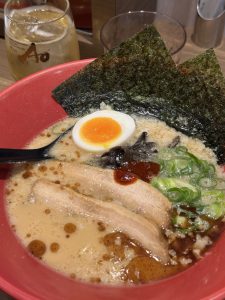 Step into any Japanese city and you’ll find a line outside a ramen shop. That’s because ramen is much more than a quick meal—it’s a regional signature. From the rich pork broth of tonkotsu ramen in Fukuoka to the miso warmth of Hokkaido’s bowls, every prefecture tells its own story through noodles.
Step into any Japanese city and you’ll find a line outside a ramen shop. That’s because ramen is much more than a quick meal—it’s a regional signature. From the rich pork broth of tonkotsu ramen in Fukuoka to the miso warmth of Hokkaido’s bowls, every prefecture tells its own story through noodles.
Behind the counter, chefs often spend years perfecting their technique—reflecting kodawari, the Japanese dedication to detail and excellence. Even the act of slurping is culturally symbolic: a sign of appreciation, not bad manners. Eating ramen is a quiet ritual, observed with reverence, and enjoyed in silence—respecting the craft and the people around you.
🥩 Yakiniku: The Spirit of Togetherness on the Grill
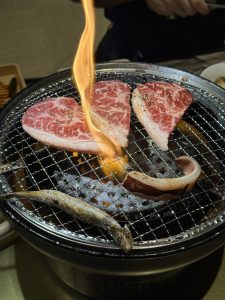 Yakiniku, or Japanese BBQ, is more than grilled meat—it’s an unspoken language of connection. At yakiniku restaurants, you cook the meat yourself, turning small pieces over hot coals with your companions. But it’s not just about food—it’s about the shared experience.
Yakiniku, or Japanese BBQ, is more than grilled meat—it’s an unspoken language of connection. At yakiniku restaurants, you cook the meat yourself, turning small pieces over hot coals with your companions. But it’s not just about food—it’s about the shared experience.
This interactive style of dining reflects the Japanese principle of wa (harmony). You’re expected to look out for one another—grilling for others, sharing sauces, and making sure everyone eats equally. In this way, yakiniku becomes a space of trust, hospitality, and social bonding, especially popular after work or during special occasions.
🍲 Shabu-Shabu: A Meditation in a Pot
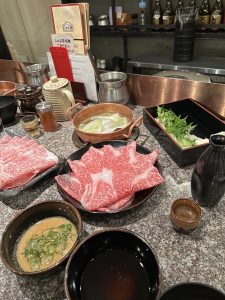 If Japan had a dish to represent mindfulness, it would be shabu-shabu. You gently swirl thin slices of beef or vegetables in a simmering broth, then dip them in sesame or ponzu sauce. Each movement is careful and slow—every bite, intentional.
If Japan had a dish to represent mindfulness, it would be shabu-shabu. You gently swirl thin slices of beef or vegetables in a simmering broth, then dip them in sesame or ponzu sauce. Each movement is careful and slow—every bite, intentional.
Rooted in the idea of seasonal balance and harmony between ingredients, shabu-shabu is traditionally served during cold seasons or family gatherings. It reflects Japanese values of moderation, respect for nature, and the beauty of impermanence—what the Japanese call wabi-sabi.
🍥 Udon: Comfort Food with Local Pride
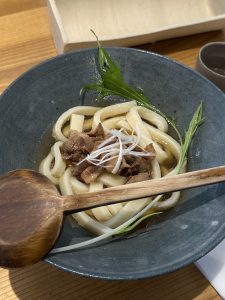 Udon might look simple—thick wheat noodles in a light broth—but in Japan, it’s a symbol of home. In places like Kagawa Prefecture, udon is a local treasure, where small family shops have passed recipes down for generations.
Udon might look simple—thick wheat noodles in a light broth—but in Japan, it’s a symbol of home. In places like Kagawa Prefecture, udon is a local treasure, where small family shops have passed recipes down for generations.
Udon showcases the cultural importance of regionality and craftsmanship. Whether hot or cold, the texture of the noodle and the subtlety of the broth reflect both the hands that made it and the seasons of the year. It’s what many Japanese people crave when they return home—familiar, grounding, and made with love.
🥞 Okonomiyaki: Creativity Served on a Hotplate
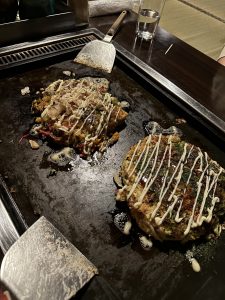 Literally meaning “grill what you like,” okonomiyaki is the most playful expression of Japanese food culture. It originated in Osaka, a city famous for its humor, warmth, and street food. The dish is made with cabbage, batter, meats or seafood, and grilled right at your table.
Literally meaning “grill what you like,” okonomiyaki is the most playful expression of Japanese food culture. It originated in Osaka, a city famous for its humor, warmth, and street food. The dish is made with cabbage, batter, meats or seafood, and grilled right at your table.
What makes okonomiyaki culturally unique is its freedom within tradition. Everyone can choose their toppings, yet there’s still a shared method and respect for ingredients. It reflects Japan’s balance between individual taste and collective enjoyment—where food becomes a celebration of personality and place.
🎥 Want to See These Dishes Come to Life?
Curious how all these dishes come to life—from the sizzle of okonomiyaki to the swirl of shabu-shabu?
👉 Watch my behind-the-scenes video to see the colors, sounds, and flavors of Japan’s food culture in action!
🗺️ FOOD MAP: Want to visit the same spots?
I created a custom map with all the locations from this video🎥→ Check it out here
📍 Don’t miss out! Continue Exploring Japan:
- ✨Blogpost 1 Japan—Where Culture, Cuisine, and Nature Intertwine
- 🚆Blogpost 2 Overwhelmed by Japan’s Rail System? Unlock the Ultimate Ticketing Guide for First-Time Travelers
- 🍡Blogpost 3 Osaka Like a Local: Hidden Temples, Secret Bars, and the REAL Takoyaki Hunt
- ⛩️Blogpost 4 Kyoto: A Journey Through Time in Japan’s Ancient Capital🇯🇵⛩️
- 🗻Blogpost 5 From Sacred Peaks to Shimmering Streets: My Journey from Mt. Fuji to the Heart of Tokyo 🇯🇵
- 😋Blogpost 6 Authentic Japanese Food Experiences: Eat Like a Local (🔝This article)
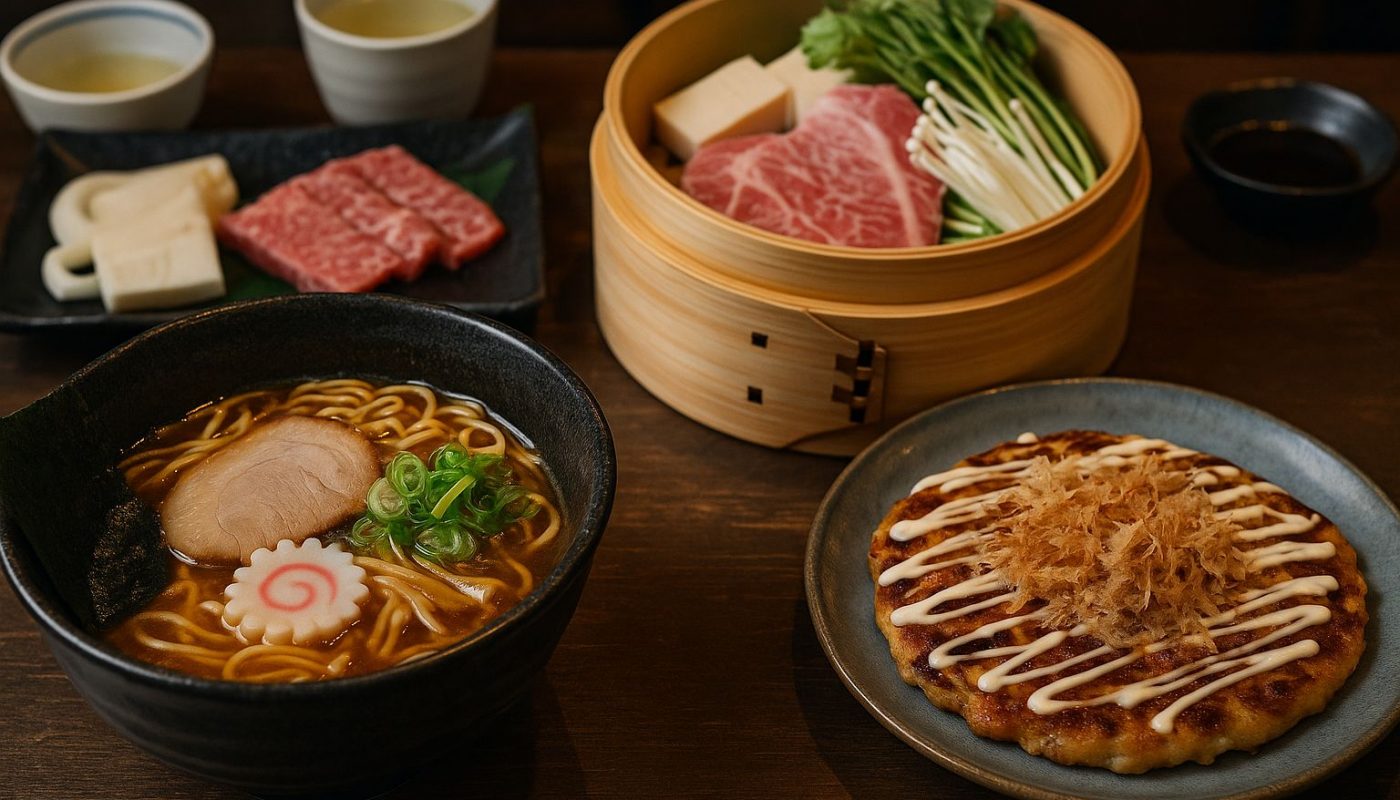



Reading your blog post while being hungry was such a mistake. Looks soo tasty😍
Haha right? I’ve done that too—scrolling through food pics with an empty stomach is dangerous 😅 Glad it made you hungry though! Which dish are you craving most now?